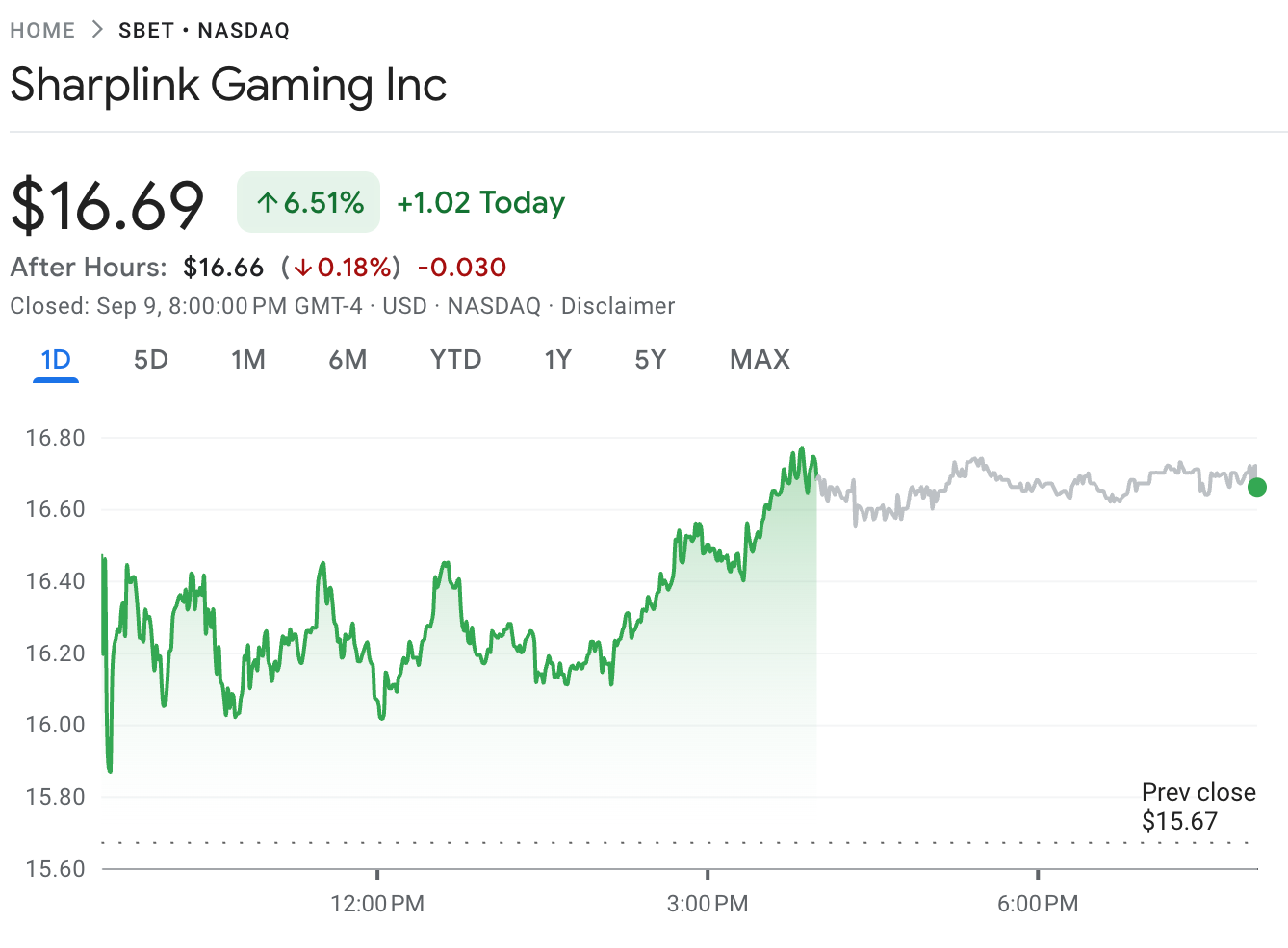Sharplink Buybacks May Support Shares as Ether Treasury Firm Trades Below NAV
ETH
ETH/USDT
$12,647,719,246.95
$3,171.49 / $3,092.59
Change: $78.90 (2.55%)
+0.0007%
Longs pay
Contents
The Sharplink buyback is a $1.5 billion share repurchase program intended to lift Sharplink stock and NAV per share by reducing outstanding shares. Sharplink repurchased 939,000 shares at an average $15.98 and holds 837,230 ETH, with most ETH staked to generate revenue.
-
Sharplink launched a $1.5B buyback after shares traded below NAV.
-
Company repurchased 939,000 shares at an average price of $15.98 to increase NAV per share.
-
Sharplink holds 837,230 ETH (approximately $3.59B) and stakes nearly all ETH to earn rewards.
Sharplink buyback: Sharplink launches a $1.5B repurchase to lift undervalued stock and NAV. Read analysis, key takeaways, and investor next steps.
What is the Sharplink buyback and why was it launched?
The Sharplink buyback is a $1.5 billion authorized share repurchase program announced to address Sharplink stock trading below its net asset value (NAV). The company says repurchases are immediately accretive and intended to increase NAV per share while signaling management’s confidence in long‑term strategy.
How many shares were repurchased and at what price?
Sharplink began the program by repurchasing 939,000 common shares at an average price of $15.98. The initial tranche targets undervaluation by reducing outstanding shares and increasing NAV per share.
| Metric | Value |
|---|---|
| Authorized buyback | $1.5 billion |
| Shares repurchased (initial) | 939,000 |
| Average repurchase price | $15.98 |
| ETH holdings | 837,230 ETH (~$3.59B) |
| 30‑day stock change | Down 25.29% |
How will the repurchase affect Sharplink stock and NAV?
Buybacks reduce the number of shares outstanding, which can raise NAV per share if assets remain constant. Because Sharplink’s treasury includes substantial ETH holdings and most ETH is staked to earn rewards, the repurchase should be accretive given current market conditions and the company’s statement that it is “significantly undervalued.”

Sharplink Gaming’s stock price increased 6.51% across the trading day on Tuesday. Source: Google Finance
What do analysts and industry voices say?
Market research groups, including commentary from NYDIG (plain text reference), have advised that digital asset treasury companies consider buybacks when shares trade below NAV. Analysts warn that premiums can narrow and recommend retaining liquidity to support share prices if conditions deteriorate.
Why should treasury firms set aside funds for buybacks?
Setting aside funds enables treasury firms to act quickly when their stock trades below NAV. This preserves optionality, prevents dilutive equity issuance, and can help stabilize share price during market dislocations, according to industry commentary and recent analyst guidance.
Frequently Asked Questions
Is Sharplink’s buyback funded from crypto holdings?
Sharplink’s buyback authorization leverages company capital and the strength of its ETH treasury; the company reports 837,230 ETH holdings and staking revenue, which supports liquidity and potential buyback execution.
Will the buyback stop Sharplink’s stock decline?
Buybacks can support price stabilization and NAV per share, but they do not guarantee a sustained rally. Market sentiment and broader crypto cycles will continue to influence the stock.
Key Takeaways
- Immediate accretion: The buyback is intended to increase NAV per share by reducing outstanding shares.
- Treasury strength: Sharplink holds 837,230 ETH, nearly all staked, which underpins the repurchase capacity.
- Investor action: Monitor repurchase cadence, NAV updates and staking revenue to assess long‑term impact.
Conclusion
The Sharplink buyback program is a disciplined capital allocation move designed to address shares trading below NAV and to demonstrate management confidence. Investors should watch repurchase execution, NAV updates and staking revenue for signals on effectiveness. COINOTAG will monitor developments and provide ongoing coverage.

